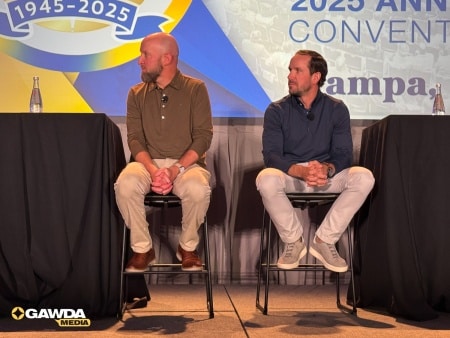FMCSA Head of Enforcement Discusses New HOS Rule. On an industry webinar held August 27, head of the Federal Moto Carrier Safety Administraiton’s Office of Enforcement Joe Delorenzo discussed the upcoming changes the agency’s driver hours of service rule. The new requirements are scheduled to go into effect on September 29, 2020. Mr. Delorenzo said the FMCSA estimates the new changes will save the industry $270 million per year in compliance costs.
Short-haul drivers. The new rules allow a CDL or non-CDL driver to operate within a 150 air-mile radius and return to the work reporting location within 14 hours and remain exempt from driver logs, electronic logging devices, and the 30-minute rest break requirements. Mr. Delorenzo noted that a carrier must record the driver’s time in and time out, and total number of hours on duty for the day, as well as the time for the last 7 days. These driver records must be kept for 6 months.
The driver is not required to carry any document in the truck showing the driver is using the short-haul exception.
If the driver exceeds the 150 air-mile radius, the driver must use a paper log for that day. The driver may use paper logs in this manner for up to 8 days in any rolling 30-day period. But if a driver exceeds 14 hours on duty in a day, the driver must not drive a commercial motor vehicle after 14 hours.
Carriers and drivers may use ELDs voluntarily even if the driver is subject to the short-haul exception.
Adverse Driving Conditions. The new rule amends the adverse driving conditions exception to allow a driver an extra 2 hours in which to operate when encountering adverse driving conditions. That term is now defined as follows: “Adverse driving conditions means snow, ice, sleet, fog, or other adverse weather conditions or unusual road or traffic conditions that were not known, or could not reasonably be known, to: (a) a driver immediately prior to beginning the duty day or immediately before beginning driving after a qualifying rest break or (b) a motor carrier immediately prior to dispatching the driver.”
Mr. Delorenzo stressed that drivers should annotate their ELD entry or driver logs to indicate the driver used the adverse driving conditions exception. He also noted that the ADC exception may be combined with the short-haul exception or the split sleeper berth rule, and that carriers may decline to allow drivers to use the adverse driving condition exception as a matter of company policy.
30-Minute Break. The new rule allows drivers to record their 30-minute break as off duty, on duty not driving, or sleeper berth time. Drivers must take the break after 8 hours of cumulative driving, not 8 hours on duty.
He also noted that a driver may not combine shorter rest periods to get a 30-minute; i.e., a driver may not take a 10-minute break after 3 hours driving and then another 20-minute break after 3 more hours driving and have that count for the 30-minute break. The 30 minutes must be taken consecutively.
Also, a driver may operate an on-duty yard move of a vehicle during the 30-minute break time.
If a driver using the short-haul exception exceeds the 150 air-mile radius during a duty period, the driver must take a 30-minute break as required.
Split Sleeper Berth. This provision allows the driver to split 10-hour off-duty period, as long as one off-duty period (whether in or out of the sleeper berth) is at least 2 hours long, and the other involves at least 7 consecutive hours in the sleeper berth. When used together, neither period counts against the 14-hour driving window.
Finally, Mr. Delorenzo emphasized that carriers and drivers must continue to operate under the current HOS rules through September 28; the new rules go into effect on September 29, 2020.
FMCSA Proposes Pilot Program for Split HOS Duty Period. The Federal Motor Carrier Safety Administration has released a notice of pilot program to allow temporary regulatory relief from the agency’s hours-of-service requirement that all driving by drivers of property-carrying commercial motor vehicles be completed within 14 hours after coming on duty.
During the pilot program, known as the Split Duty Period Pilot Program, participating CMV drivers would have the option to pause their 14-hour on-duty period (also called a driving window) with one off-duty period of no less than 30 minutes and no more than 3 hours. Participation would be limited to a certain number of commercial driver’s license holders who meet the criteria specified for participation.
This pilot program seeks to gather statistically reliable evidence whether decisions concerning the timing of such flexibility can be aligned with employers’, shippers’, and receivers’ scheduling preferences to optimize productivity while ensuring safety performance at a level equivalent to or greater than what would be achieved absent the regulatory relief.
The agency intends to sample approximately 200-400 CMV drivers over a period of up to 3 years. The FMCSA says that allowing drivers to split a duty period might permit them to avoid congestion and reduce the incentive to exceed speed limits in order to complete runs within the 14-hour duty window.
Once the notice is published in the Federal Register, there will be a 60-day public comment period. The implementation date of the pilot program would be announced in subsequent Federal Register notices.




